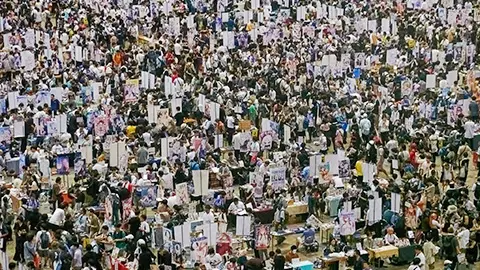VOL.195 AUGUST 2024
EXPLORE THE UNIQUE CHARM OF MANGA IN JAPAN
Kitakyushu Manga Museum where You Can Not Only Watch, but also Read and Draw Manga
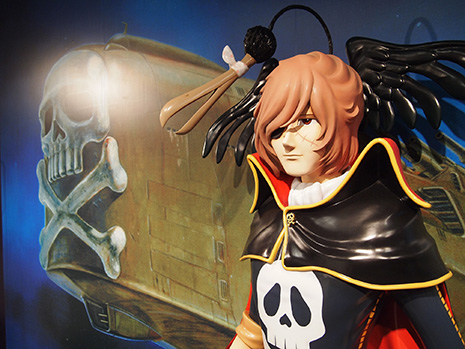
Photo: Kitakyushu Manga Museum
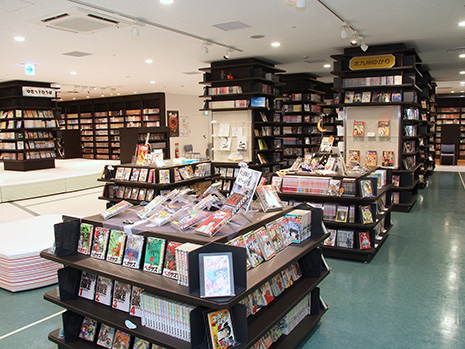
Photo: Kitakyushu Manga Museum
Located in Kitakyushu, the gateway to Kyushu in the southwestern part of Japan, the Kitakyushu Manga Museum is dedicated to manga. It hosts exhibitions of popular manga and anime, offering a paradise for manga enthusiasts with a collection of around 70,000 manga volumes available for unlimited reading. The museum’s permanent exhibit is accessible through multilingual audio guides, including English, making it a favorite among international visitors. We spoke with a museum staff member to learn more about its unique features.
Kitakyushu City in Fukuoka Prefecture is a major city in Kyushu, comparable to Fukuoka City, with a population of approximately 910,000** (as of July 2024). It takes about 4 hours and 40 minutes by Shinkansen from JR Tokyo Station to Kokura Station, the city’s central hub. Near Kokura Station is the Kitakyushu Manga Museum, dedicated entirely to manga. Why was a manga-focused museum established in Kitakyushu? HIRANO Yuko, in charge of the museum’s public relations, explains the background behind this.
“After Moji Port*** in Kitakyushu developed into an international trade port and the city became an economic hub of western Japan in the 1900s, several newspaper and advertising company headquarters were established in Kitakyushu. At that time, illustrations for newspapers, magazines, and advertisements were hand-drawn, creating a strong demand for artists in the area,” says HIRANO. “After World War II, Kitakyushu was known for having a high number of rental bookstores and movie theaters, and people were very interested in visual arts like manga and films. The city has produced many renowned manga artists, including MATSUMOTO Leiji* and HOJO Tsukasa****. Additionally, Kitakyushu has a long-standing manga culture, evidenced by a manga fan club that has been active since 1966. These factors all contributed to the establishment of the museum.”
The manga museum, with its theme of “watch, read, and draw,” features exhibitions of popular manga and anime and offers unlimited access to approximately 70,000 manga volumes. The museum also hosts a variety of fun events, including opportunities to experience manga drawing using professional tools.
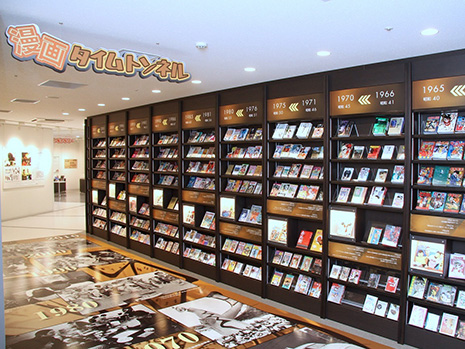
Photo: Kitakyushu Manga Museum
The number of visitors averages approximately 100,000 per year, and in fiscal 2023, around 4,000 of them were from overseas. “We often hear requests to see the original manga of anime that has been broadcast overseas,” comments HIRANO. “For example, Galaxy Express 999 and Space Pirate Captain Harlock, both based on MATSUMOTO Leiji’s works, were broadcast in countries like South Korea and Italy. Visitors are often moved when they see the permanent exhibit.”
Visitors can listen to the content of the permanent exhibit using multilingual audio guides (available in English, Chinese, Korean, and French) on their own smartphones, a service that is widely used.
The photo spot known as the Manga Panels area is particularly popular among international tourists (see photo). In Japanese manga, a unique feature is the use of effect lines, which replace the background to express characters' movements and emotions, as well as the use of onomatopoeia***** to convey the atmosphere or emotions. A key feature of the Manga Panels is the use of effect lines in place of backgrounds to convey characters’ movements and emotions. In addition, words known as onomatopoeia are used to represent the atmosphere or shifts in a character’s feelings, enhancing the sense of realism.
Visitors can take commemorative photos with manga panels featuring uniquely Japanese effect lines and onomatopoeia in the background, so it attracts many tourists.
“Recently, we’ve seen an increase in visits from overseas school trips and university study programs,” says HIRANO. “More people are reserving our workshops, where they can receive direct instruction on various manga techniques, from copying existing works and digital drawing to creating four-panel comics, experiencing what it’s like to be a manga artist’s assistant******, and learning how to draw backgrounds and add shadows for depth—catering to everyone from beginners to those looking to advance their skills.”
If you’re a fan of Japanese manga, be sure to visit this specialized museum in Kitakyushu during your trip to Japan.
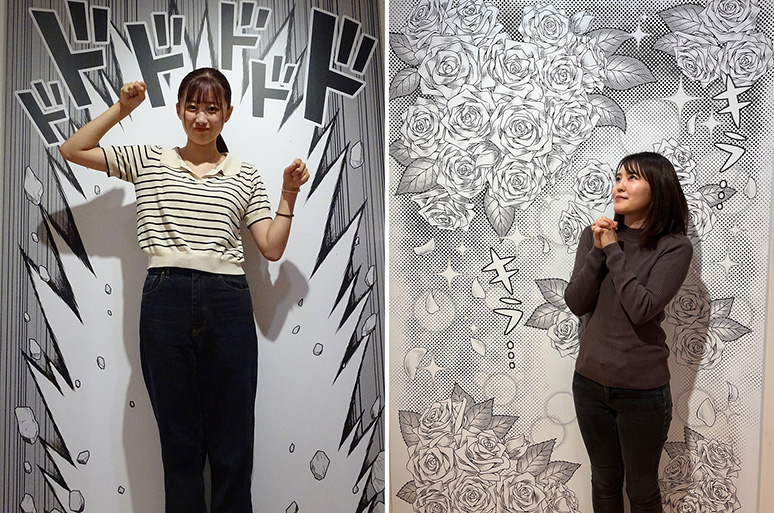
Permanent exhibit “Manga Panels.” (Left) The background of a panel features the onomatopoeia “dododo,” depicting the forceful movement of a large object or a large number of objects. (Right) The background showcases the onomatopoeia “kira kira,” representing a sparkling or glittering effect.
Photo: Kitakyushu Manga Museum
* Born in 1938 and passed away in 2023. Many of his works were adapted into anime during the 1970s and were loved worldwide. His notable works include Galaxy Express 999 and Space Pirate Captain Harlock. He spent his childhood in Kitakyushu.
** Estimated population by Kitakyushu City Hall (as of July 1, 2024).
*** After being designated as a special export port by the government in 1889, Kitakyushu began trading coal. By 1916, it had the highest number of foreign trade ships entering and leaving port in the country. Many buildings with an exotic atmosphere were constructed, and today, these historical structures have been preserved as popular tourist destinations.
**** Born in 1958. In the 1980s, he achieved massive success with Cat’s Eye and City Hunter, gaining a passionate following. Both works have been adapted into anime and live-action formats, attracting many international fans. He was brought up in Kitakyushu City.
***** Onomatopoeia refers to words that imitate the sounds they represent, like “buzz” for a bee. Japanese has approximately 4,500 such words, making it a language rich in onomatopoeia compared to others globally. In manga, onomatopoeia enhances the sense of immediacy by adding auditory expression to the visual representation through illustrations.
****** In Japanese manga production, tasks are often divided among team members. The main characters are usually completed by the manga artist, while backgrounds, speech bubbles, and other elements are often handled by assistants.
By TANAKA Nozomi
Photo: Kitakyushu Manga Museum

